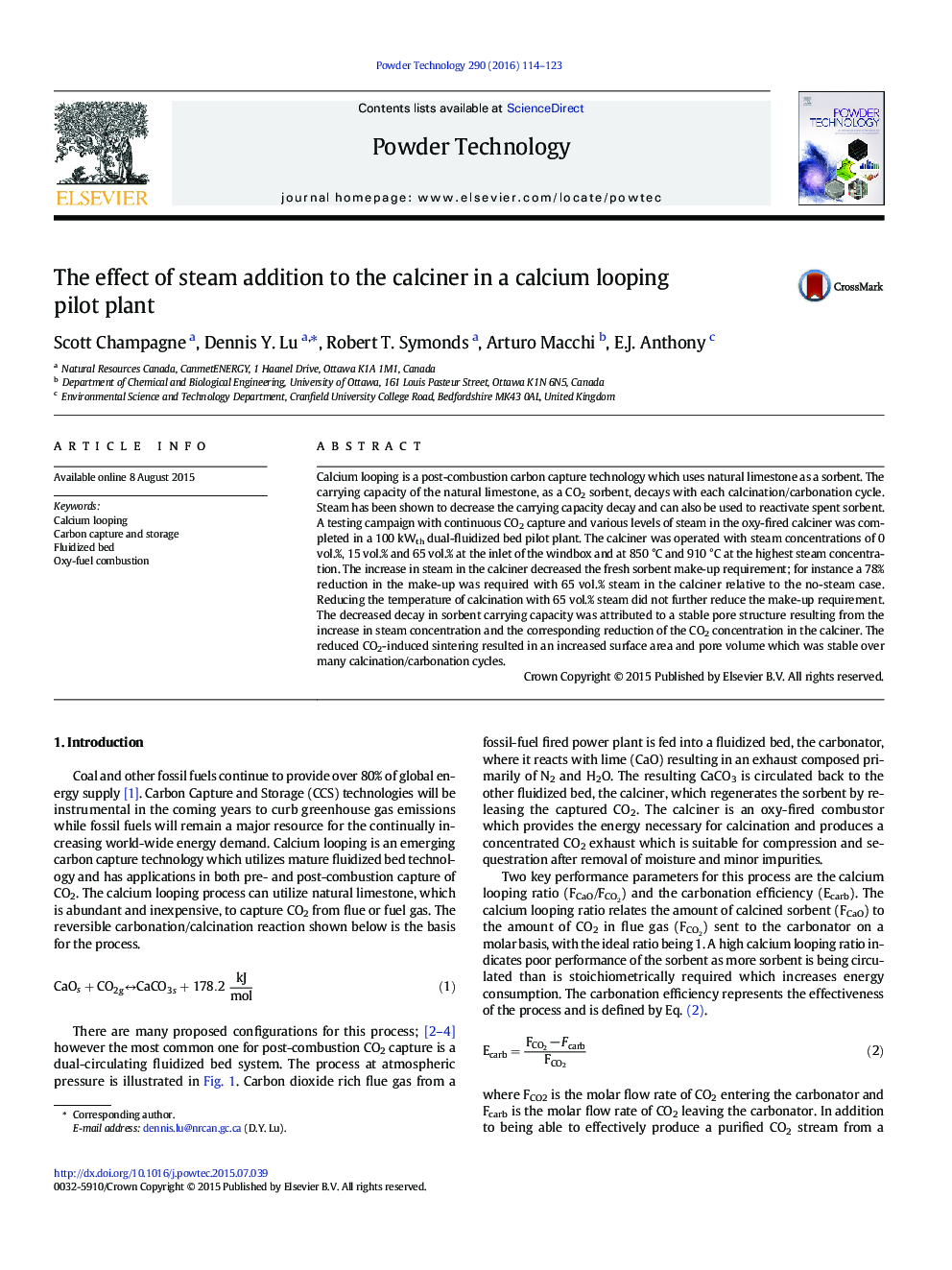| Article ID | Journal | Published Year | Pages | File Type |
|---|---|---|---|---|
| 235109 | Powder Technology | 2016 | 10 Pages |
•Post-combustion CO2 capture was demonstrated by Ca-based sorbent looping.•Experiments in a 100 kWth calcium looping pilot-scale dual-fluid bed system.•CO2-rich atmospheres inside calcination were achieved by oxy-fired biomass.•The effect of steam addition injected into calciner was investigated.•Steam addition enhanced sorbent performance and reduced make-up rates.
Calcium looping is a post-combustion carbon capture technology which uses natural limestone as a sorbent. The carrying capacity of the natural limestone, as a CO2 sorbent, decays with each calcination/carbonation cycle. Steam has been shown to decrease the carrying capacity decay and can also be used to reactivate spent sorbent. A testing campaign with continuous CO2 capture and various levels of steam in the oxy-fired calciner was completed in a 100 kWth dual-fluidized bed pilot plant. The calciner was operated with steam concentrations of 0 vol.%, 15 vol.% and 65 vol.% at the inlet of the windbox and at 850 °C and 910 °C at the highest steam concentration. The increase in steam in the calciner decreased the fresh sorbent make-up requirement; for instance a 78% reduction in the make-up was required with 65 vol.% steam in the calciner relative to the no-steam case. Reducing the temperature of calcination with 65 vol.% steam did not further reduce the make-up requirement. The decreased decay in sorbent carrying capacity was attributed to a stable pore structure resulting from the increase in steam concentration and the corresponding reduction of the CO2 concentration in the calciner. The reduced CO2-induced sintering resulted in an increased surface area and pore volume which was stable over many calcination/carbonation cycles.
Graphical abstractFigure optionsDownload full-size imageDownload as PowerPoint slide
